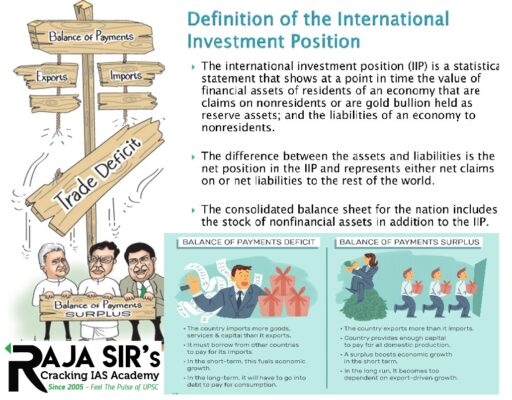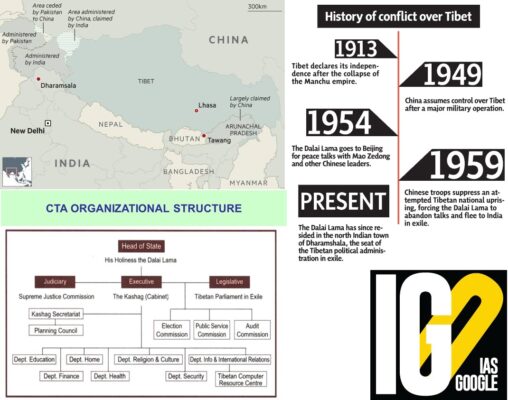- Home
- Prelims
- Mains
- Current Affairs
- Study Materials
- Test Series
 EDITORIALS & ARTICLES
EDITORIALS & ARTICLES
Jan 03, 2022
THIRD BOLLARD PULL TUGS 'BALRAJ' DELIVERED TO NAVAL DOCKYARD, VISAKHAPATNAM
Recently, third tug in series, “Balraj” was delivered to Naval Dockyard, Visakhapatnam.
 Fimbristylis sunilii
Fimbristylis sunilii

 Suez Canal:
Suez Canal:
 Background and timeline:
Tibetan Government-in-Exile:
Background and timeline:
Tibetan Government-in-Exile:
 Savitribai Phule
Savitribai Phule
- Induction of Bollard Pull Tugs will enhance the capability to meet high operational requirements of Fleet assets of Indian Navy.
- Tugs “Veeran” and “Balram” have already inducted at Naval Dockyard, Visakhapatnam and Naval Dockyard, Mumbai.
- Balraj is the third tug in the series.
- The tugs have been designed and built under classification rules of Indian Register for Shipping (IRS).
- They are capable of assisting large naval ships including, Aircraft Carrier and Submarines in berthing, un-berthing, turning and maneuvering in confined waters and in harbor.
- They also provide afloat firefighting cover/assistance to ships alongside/anchorage and the capability for Search and Rescue operations.
- Lignite is a dark brown or black coal that formed from peat at shallow depths and temperatures lower than 100 °C.
- It is the first product of coalification and is intermediate between peat and subbituminous coal.
- It contains about 60 to 70 percent carbon and has a calorific value near 17 megajoules per kilogram.
- Indian lignite deposits occur in the tertiary sediments in the southern and western parts of peninsular shield.
- It includes states like Tamil Nadu, Puducherry, Kerala, Gujarat, Rajasthan and Jammu &Kashmir.
- Coal is a combustible black or brownish-black sedimentary rock with a high amount of carbon and hydrocarbons.
- It is classified as a non-renewable energy source because it takes millions of years to form.
- It is the energy stored by plants that lived hundreds of millions of years ago in swampy forests.
- It is a hard, brittle, and black lustrous coal, often referred to as hard coal.
- It contains a high percentage of fixed carbon and a low percentage of volatile matter.
- Bituminous coal is a middle rank coal between subbituminous and anthracite.
- It usually has a high heating value and is used in electricity generation and steel making.
- Subbituminous coal is black in color and is mainly dull (not shiny).
- It has low-to-moderate heating values and is mainly used in electricity generation.
- Lignite coal or brown coal, is the lowest grade coal with the least concentration of carbon.
- It has a low heating value and a high moisture content and is mainly used in electricity generation.
 Fimbristylis sunilii
Fimbristylis sunilii
- It is a new species of Cyperaceae, from the Western Ghats of Kerala, Southwest India.
- It stands 20-59 cm tall and was collected from an elevation of 1,100 meters.
- It is a prostrate perennial herb.
- It hails from the family Rubiaceae and grows on high-altitude grasslands.
- It grows up to 70 cm in length and is many-flowered with the petals pale pink in color.

- The International Monetary Fund (IMF) describes a nation’s IIP as showing the value of financial assets of residents of an economy that are claims on non-residents, or are gold bullion held as reserve assets; and of the liabilities of residents to non-residents.
- India’s Balance of Payments (Bop)was in surplus of $15.3 billion in Q2FY21.
- But BoP position moved to a deficit of $9.6 billion in the quarter ended September (Q2).
- Balance Of Payment (BOP) is a statement which records all the monetary transactions made between residents of a country and the rest of the world during any given period.
- These transactions include exports and imports of goods, services and financial assets, along with transfer payments.
- The balance of payments is put together according to international standards set out by the International Monetary Fund (IMF)and the United Nation.
- A BOP statement of a country indicates whether the country has a surplus or a deficit of funds:
- When a country’s export is more than its import, its BOP is said to be in surplus.
- The sum of all transactions recorded in the balance of payments must be
- The reason is that every credit appearing in the current account has a corresponding debit in the capital account.
- The balance of payments divides transactions into two broad accounts:
- The current account includes transactions in goods, services, investment income, and current transfers.
- The capital account includes transactions in financial instruments and central bank reserves.
- The current account records the value of the flow of goods, services and income between residents and the rest of the world.
- Trading in goods between countries are referred to as visible items and import/export of services (banking, information technology etc) are referred to as invisible items.
- Unilateral transfers refer to money sent as gifts or donations to residents of foreign countries.
- It includes personal transfers like remittances.
- Capital transactions include the purchase and sale of assets (non-financial) like land and properties.
- The capital account also includes the flow of taxes, purchase and sale of fixed assets etc by migrants moving out/into a different country.
- Loans and borrowings – It include all types of loans from both the private and public sectors located in foreign countries.
- Investments – These are funds invested in the corporate stocks by non-residents.
- Foreign exchange reserves – Foreign exchange reserves held by the central bank of a country to monitor and control the exchange rate does impact the capital account.
- Financial transactions related to long-term capital investment in a business (e.g., purchase of machinery, buildings and factories).
- The purchase of equity or debt (shares or bonds) in a business.
- The purchase or sale of financial derivatives.
- It included financial contracts between two parties where the value is derived from another financial instrument, such as a bond or share, or a market index.
- The purchases or sale of reserve assets held by the Reserve Bank.
- These reserves are assets controlled by the Reserve Bank to meet policy objectives such as intervention in the foreign exchange market and to assist the government in meeting its commitments to the IMF.
- The BOP of a country reveals its financial and economic status.
- A BOP statement can be used as an indicator to determine whether the country’s currency value is appreciating or depreciating.
- The BOP statement helps the Government to decide on fiscal and trade policies.
- It provides important information to analyze and understand the economic dealings of a country with other countries.
 Suez Canal:
Suez Canal:
- It is a manmade canal of Egypt, which connects the Mediterranean Sea to the Red Sea through the Isthmus of Suez.
- The red sea separates the Asian continent from the African continent
- Length: around 195 km. (22 meters of width and around 8-meter depth).
- Due to its small size, it has seen many blocks, impacting world trade.
- It accounts for roughly10% of global maritime trade. –
- It is a source of much-needed foreign currency for Egypt.
- It provides the shortest maritime route between Europe and the lands lying around the Indian and western Pacific oceans.
 Background and timeline:
Tibetan Government-in-Exile:
Background and timeline:
Tibetan Government-in-Exile:
- Central Tibetan Administration (CTA) is also known as the Tibetan Government-in-Exile.
- CTA is the executive arm, led by Dalai Lama.
- CTA functions on the basis of the Constitution of the Tibetan government called ‘The Charter of the Tibetans in Exile’.
- Currently, Tibetan Government-in-Exile also has foreign missions in many countries, including India.
- In-exile literally means, local people, forced to live outside their native area.
- Due to the brutalities of China, in 1959, the Dalai Lama (who is the head of the Tibetans) came to India with his followers.
- Later with the support of the government of India, they established their own government system on Indian soil (at Dharamshala), called Tibetan Parliament-in-Exile.
- It covers people who came to India with the Dalai Lama and people living in Tibet but supporting Dalai lama.
- Later the Charter of the Tibetans in Exile was adopted by the Tibetan Parliament-in-Exile in 1991. It provided for Central Tibetan Administration (CTA) and a Judiciary.
- He is the political and cultural head of the Tibetans.
- They are believed to be manifestations of Avalokiteshvara or Chenrezig.
- They are considered as the bodhisattva of Compassion and patron saint of Tibet.
- Since 1959, he has been living in Dharamsala (Uttrakhand).
- Dharamshala also serves as the seat of the Tibetan political administration in exile.
 Savitribai Phule
Savitribai Phule
- Born: 3 January 1831, Satara, Bombay
- She was an Indian social reformer, educationalist, and poet from Maharashtra.
- She is regarded as the first female teacher of India.
- Along with her husband, Jyotirao Phule, she played an important and vital role in improving women's rights in India.
- She is regarded as the mother of Indian feminism.
- Savitribai and her husband founded one of the first Indian girls' school in Pune, at Bhide wada in 1848.
- She worked to abolish the discrimination and unfair treatment of people based on caste and gender.
- She was against the child marriage and strongly opposed the Sati tradition.
- She Opened a women's shelter called the Home for the Prevention of Infanticide where widows could deliver their children
- She also used her voice to raise awareness regarding widow remarriage.
- She established the Mahila Seva Mandal to raise awareness for issues concerning women's rights.
- She published Kavya Phule in 1854 and Bavan Kashi Subodh Ratnakar in 1892.
- Died: 10 March 1897 (aged 66) Pune, Bombay









 Latest News
Latest News General Studies
General Studies